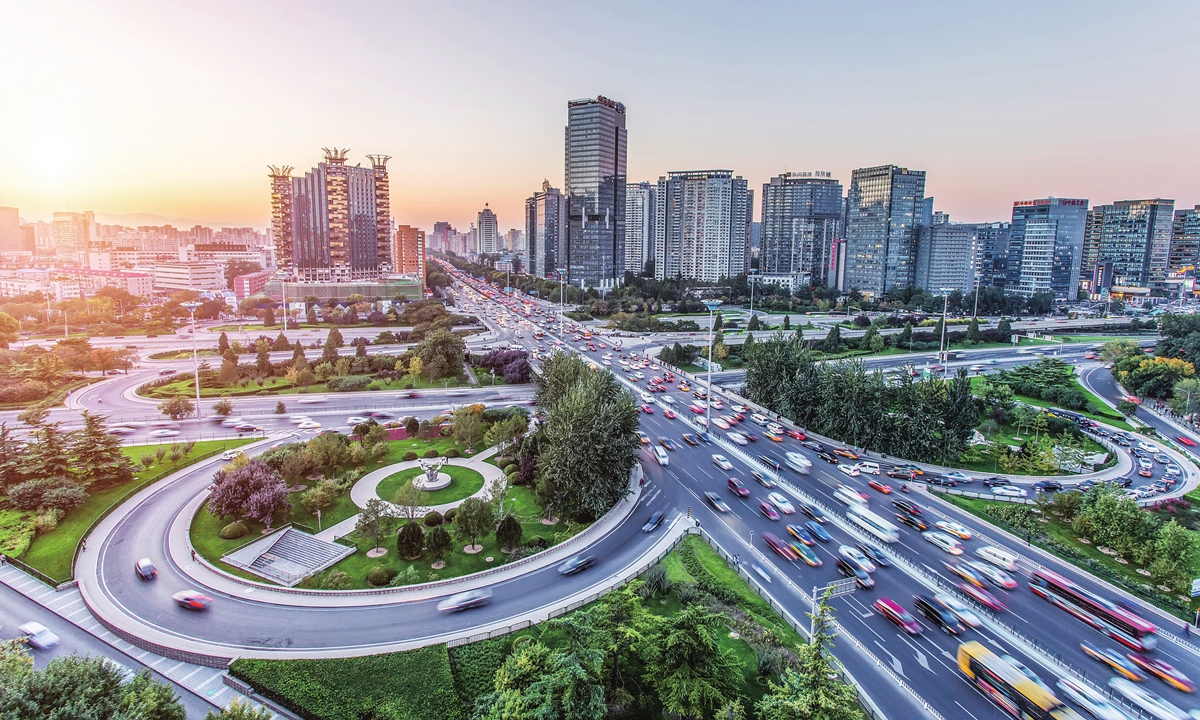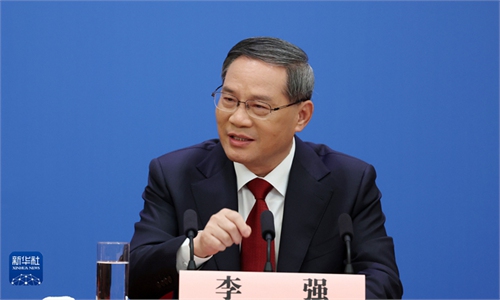Peking University professors offer proposals for China's high-quality economic development

A view of Beijing Photo: VCG
The biggest difference between Chinese modernization and Western modernization is that Chinese modernization is to achieve high-quality development, which is driven by "total factor productivity" (TFP), Liu Qiao, dean of Guanghua School of Management, Peking University, said at a conference on Monday.
As China is undergoing a transition from a high-growth-rate model driven by capital and labor to high-quality development driven by TFP, maintaining the growth rate of China's TFP becomes biggest uncertainty now, Liu said.
Looking back, the advancement of industrialization in China has contributed to the high growth of TFP. From 2000-2009, the annual growth rate of TFP stayed at 4.4 percent, falling to 2.1 percent between 2010 and 2018.
Liu said that from a conventional view, after TFP growth drops to 2 percent, China's long-term economic growth rate is expected to reach around 4 percent, while another view posits that after completing the industrialization process, the country has the potential to achieve a reversal in TFP growth from 2 percent back to 2.5-3 percent.
The potential comes from broad-based digital transformation, new infrastructure construction, strong manufacturing and improved efficiency of resource allocation thorough deepening reform and opening-up, the expert noted.
In order to achieve Chinese-style modernization, the country should maintain high intensity and moderate investment in key areas, increasing the intensity of research and development (R&D). In addition, the government should adopt a proactive fiscal policy including an increase in long-term government bonds, Liu said.
In terms of promoting a high level of institutional opening-up, Tang Yao, a professor at Guanghua School of Management, said that compared with weak world economic growth expectations, China's economy had regained momentum in January-February after the optimization of the anti-COVID policies, and this year's predicted GDP growth of around the 5 percent will provide favorable conditions for stabilizing foreign investment and industrial chain.
Tang noted that China's core advantages in foreign trade and foreign capital are a complete industrial chain and a large domestic market. With the development of the market economy and intensification of international competition in attracting investment, large international companies place more importance on institutional openness and stable policy, so the government should enhance industrial and financial support, optimize market access and ensure logistics security, Tang added.
Recent banking woes in the US and Europe raised eyebrows about global financial risk. In response to the collapse of Silicon Valley Bank, Liu Xiaolei, professor of Finance and Accounting from Guanghua School of Management, noted that China maintained relatively strict management of cross-border capital, so the negative spillover impact of offshore financial risk on China's market would be limited.
"We do not have to worry too much about the negative spillover effect of the banking crisis in Europe and the US to China," Liu told the Global Times.
However, China has its own challenges, such as rising local government debt. Therefore, the country should continue to boost institutional reform and strengthen financial supervision in order to prevent potential risks, Liu said, noting that economic development is the key to address the problems.
China on March 7 unveiled a sweeping reform plan for a slew of state institutions, with a focus on establishing a national financial regulatory administration, which will be in charge of regulating the financial industry except for the securities sector.
Liu said that the new financial regulatory system will strengthen the leadership of the Communist Party of China in the financial sector, filling regulatory gaps and moving towards functional supervision. In addition, it achieves the separation of regulatory and development functions, and helps curb financial corruption.
Moving forward, how financial institutions can combine new technology to better serve small and medium-sized enterprises and the real economy will become the focus of the decision-makers, Liu added.
Global Times



